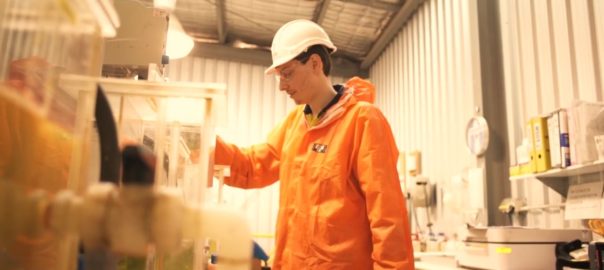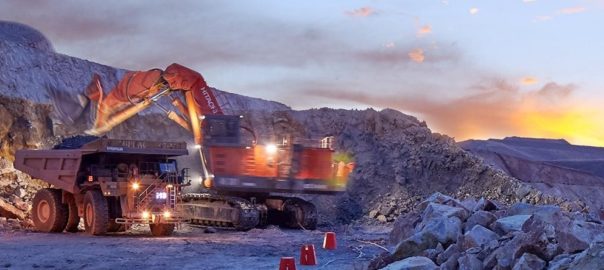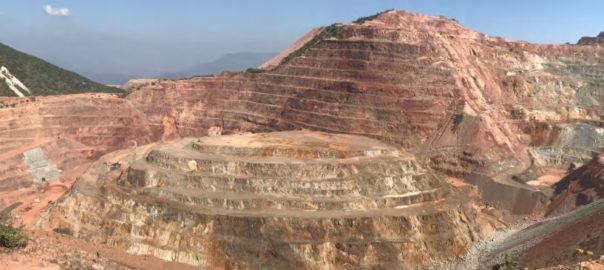Diane Jurgens, BHP’s Chief Technology Officer, used her time on stage at the Bank of America Merrill Lynch SmartMine conference, in London, to highlight the company’s plan to introduce full or partial automation across its entire value chain.
The miner has already introduced automation across many of its operations – from haul trucks at Jimblebar (Western Australia) to drill rigs at Western Australia Iron Ore – but Jurgens said the company has bigger automated plans.
This includes considering opportunities to accelerate truck autonomy across the company’s Australia and Minerals Americas sites – the company previously detailed plans to automate around 500 haul trucks across its Western Australia Iron Ore and Queensland Coal sites – and introducing “Decision Automation” to link autonomous processes and data from different sources together to create “near instantaneous, optimised decision making”, Jurgens said.
While she talked up the use of automation in mining – referencing the experience she has in the automotive and aerospace industries – she admitted full automation across the BHP group was unlikely.
“This is because we automate equipment and processes where it provides the highest value,” she said, explaining that investment in technology competes against all of other projects in the BHP portfolio, “and alternative uses of cash, under BHP’s Capital Allocation Framework”.
To test this, the company has built proving grounds at two active mine sites (Eastern Ridge in Australia and Escondida in Chile) to trial new innovations in geology, extraction and processes, and “develop workforce capability so that our people are equipped for the rapid pace of change that lies ahead”, Jurgens said.
Just some of the new innovations Jurgens mentioned included the use of advanced geophysics modelling to reanalyse existing drilling data. This new approach led, in November last year, to the Oak Dam copper discovery, near its existing Olympic Dam operations in South Australia.
Recently, sensors were installed at the Escondida test grounds to prototype the use of real-time data to analyse the quality and grade of ores and inform, for example, whether to divert unprocessed ore for leaching, to concentrators or waste. Jurgens said: “The key to achieving this is using data collected through the sensors and combining it with proprietary algorithms. We then apply our knowledge of the ore body to optimise the processing methods. Once in production, we expect these to improve throughput performance.”
With access to more detailed data on extracted material, machine algorithms can automate decisions to identify and divert waste, which increases plant performance and reduces processing costs, she added.
New patented leaching technologies have, meanwhile, increased metal recoveries by 10-12% and shortened the processing time by 50%, according to Jurgens. “At Spence in Chile we increased copper recoveries by about 10% and helped offset grade decline through implementing the low-cost Spence Recovery Optimisation project,” she said. “The initiative improved heap leach kinetics which meant we could maximise utilisation of the leach pads and therefore use the full 200,000 t of tankhouse capacity.”
This breakthrough also informed the successful heap leach trial at Olympic Dam, which the company has just completed.
The company’s automation and innovation journey has already resulted in significant wins, according to Jurgens.
Equipment automation is creating more efficient, standardised and safer operations, she said:
- Autonomous blast hole drills across BHP’s Western Australia Iron Ore assets have increased drill rates by 25%, and reduced monthly drill maintenance costs by over 40%;
- Haulage automation at the Jimblebar operation, in the Pilbara, has reduced heavy vehicle safety incidents by 80%;
- Machine learning is being applied to maintenance on trucks in iron ore and coal – to analyse component failure history;
- At Yandi, haul truck maintenance analytics increased truck availability to above 90% and generated recurrent cost savings. Replicating these strategies to our trucks in energy coal in the Hunter Valley, BHP has also seen an increase in truck availability;
- Automating key components of BHP’s rail network is supporting increased capacity, more reliable dispatch and improved maintenance outcomes;
- In Western Australia, material density scanning and laser precision have delivered an additional 2.4 t of iron ore per car while reducing safety risks of overloading;
- The automated rail network scheduling system, which controls over 10,000 ore cars and transports about 270 Mt/y of iron ore, is becoming more effective through self-learning algorithms, ensuring trains arrive at port, on-time, and;
- LiDAR technologies are being used to automate the loading of ships that transport BHP’s product to customers around the world.










